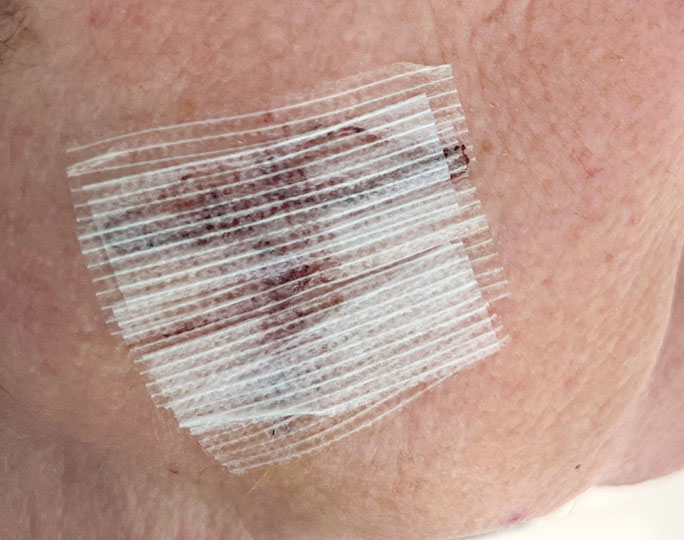
Skin cancer is often treated with surgery that removes the cancer from the skin. There are two main types of skin cancer surgery. With electrosurgery, a sharp instrument with a ring-shaped tip is used to scrape or shave off the cancer. The cancer cells left are killed with heat or a chemical. Many treatments may be needed to cure the cancer. During excisional surgery, the cancer and an area of healthy skin is cut out or shaved off. Many surgeries or “stages” may be needed to remove all the cancer.
Mohs is a type of excisional surgery, and is the most common surgery done to treat basal and squamous cell skin cancers. While Mohs can cure these common forms of skin cancer, it can have a long recovery time and leave lasting scars—neither of which are expected by many of the people who have it.
Mixed feelings on the results
Mohs surgery has been shown to cure about 99% of basal and squamous cell skin cancers. Along with learning about how Mohs can help, you should also learn about what it is like to have Mohs—including how you can prepare and what the recovery is like. Recovery from Mohs can take weeks or months. During that time, you may need to change bandages, apply medicine to the wound, or limit the amount of activity you do. There are steps you can take beforehand, like not smoking and eating healthfully, that can help you have a better recovery.
Because Mohs cuts the cancer out of the skin, there is a wound left where the cancer used to be. That wound may be left to heal on its own or stitched closed. If it is large, a skin flap or skin graft may be needed. Regardless of how the wound closes, Mohs surgery will likely leave a scar.
There is no way to know how large the wound from Mohs surgery will be until the surgery starts and the surgeon finds out how large the cancer is. Because of that, there is also no way to know how large the wound will be and how the scar will look. One study showed that 8 out of 10 people who had Mohs had a scar that was larger than what they thought it was going to be, based on what their surgeon told them before surgery. Another report shows that up to 15% of people need reconstructive or plastic surgery to fix a wound from Mohs surgery.
While skin cancer being cured is a relief, living the rest of your life with a scar might not be as welcome.
Cure without cutting
The good news is that skin cancer can be cured without surgery. In fact, there are nearly 10 surgery-free treatments for skin cancer. Many of them leave little to no scarring.
Radiotherapy is one of the more effective surgery-free treatments. It cures 99%+ of basal and squamous cell skin cancers. It uses X-ray energy, like what is used in a dentist office, to kill the skin cancer cells. There is no bleeding, wound care, or long recovery times. One type of radiotherapy, Image-Guided Superficial Radiotherapy (IG-SRT) uses ultrasound images to plan the precise doses of treatment and track the cancer as it is cured. Other than some minor redness on the skin that fades after treatment, there is no scarring.
It is important to talk with your dermatologist to learn about Mohs surgery and other skin cancer treatment options. You have the right to learn about and choose the treatment that is best for you. You don’t have to choose between curing and not scarring—you can have both.


